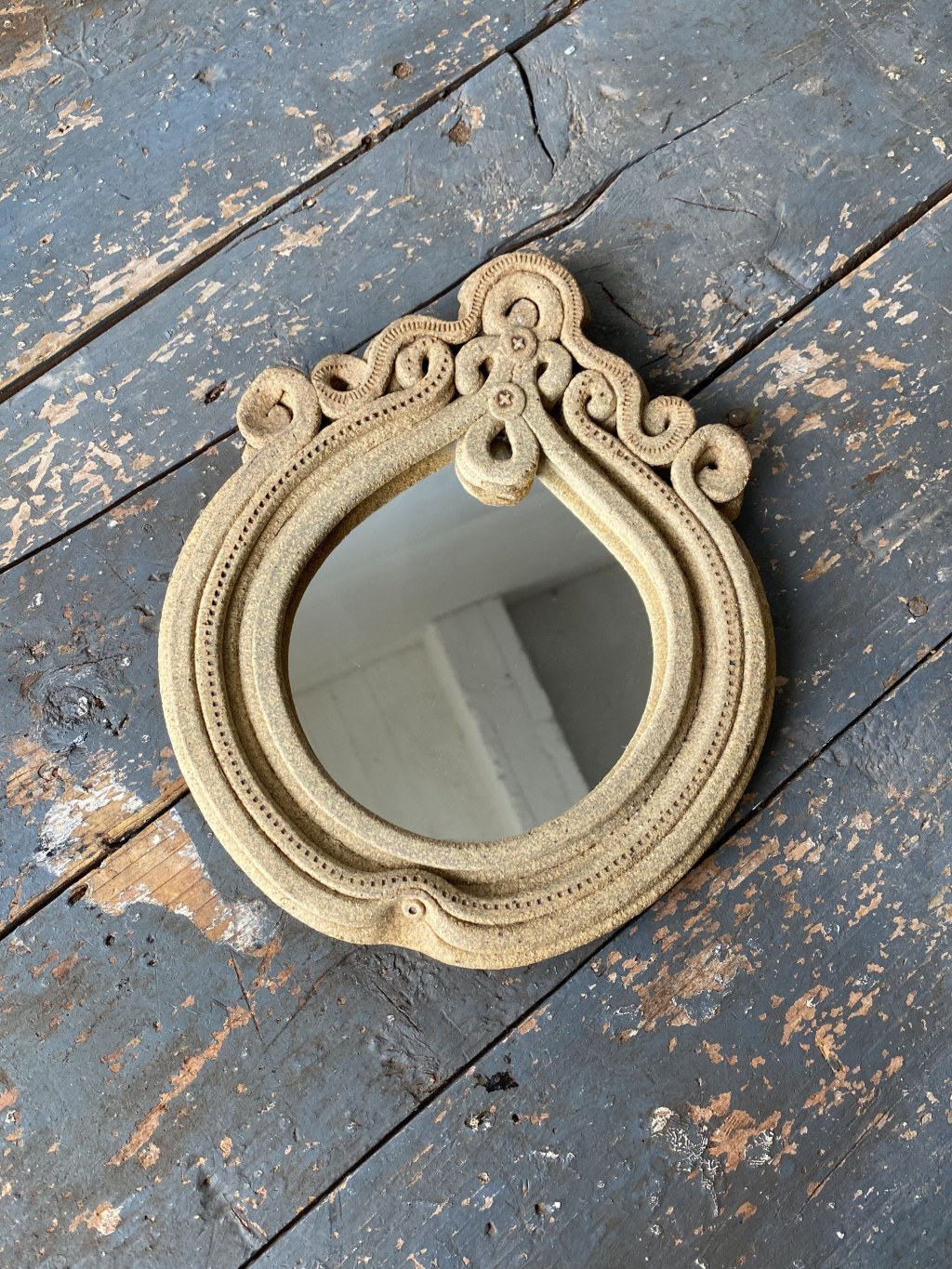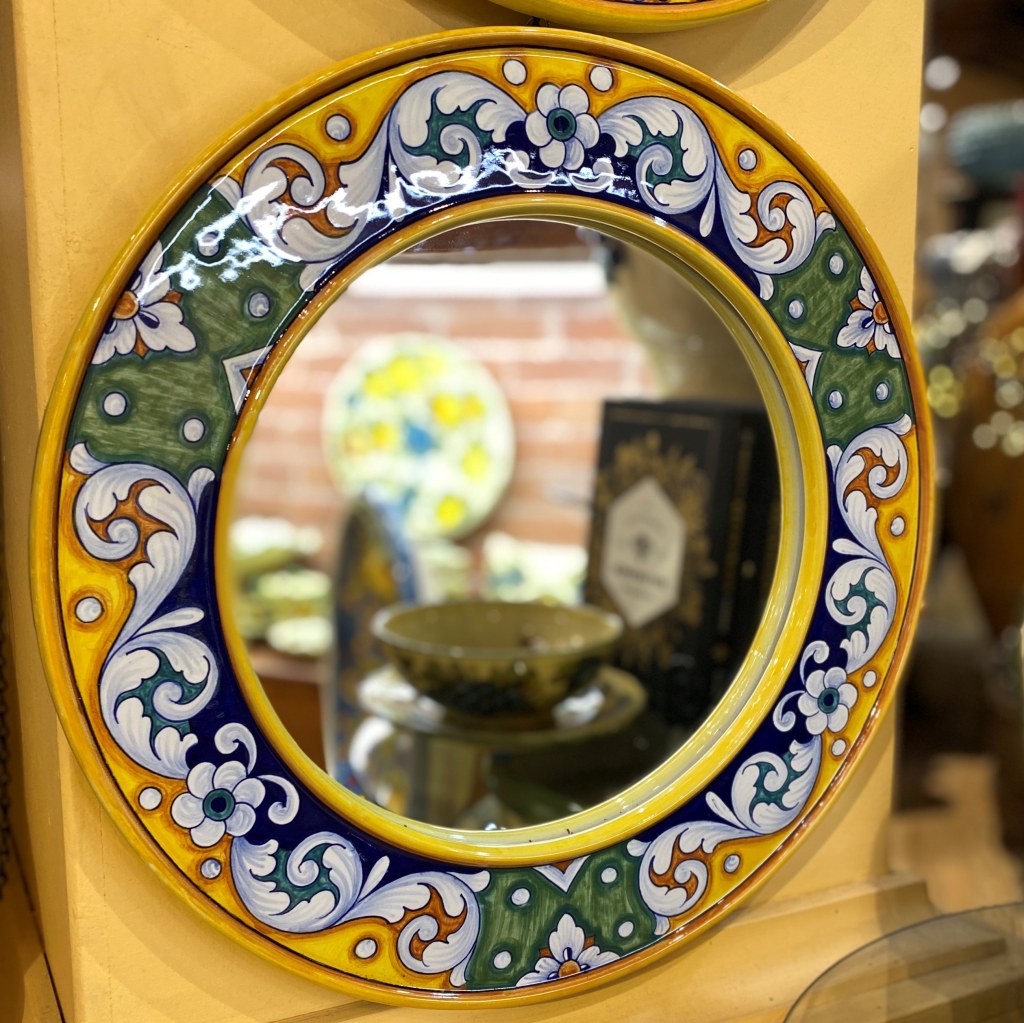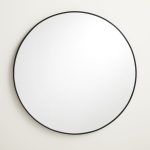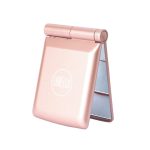Discover The Exquisite Craftsmanship Of Pottery Mirror: A Captivating Fusion Of Art And Reflection
Pottery Mirror: Reflecting the Beauty of Art and Craftsmanship
Greetings, dear readers! Today, we delve into the mesmerizing world of pottery mirrors, where art and craftsmanship intertwine to create exquisite pieces that captivate the eyes and souls of admirers. In this article, we will explore the history, significance, advantages and disadvantages, as well as frequently asked questions about pottery mirrors. So, let’s embark on this artistic journey together!
Introduction: Unveiling the Beauty of Pottery Mirrors
Pottery mirrors are not just ordinary mirrors; they are exquisite masterpieces crafted with precision and passion. These mirrors showcase the perfect blend of artistry and functionality, making them a standout piece in any space. From their humble origins to their modern-day popularity, pottery mirrors have stood the test of time, capturing the hearts of art enthusiasts and collectors alike.
2 Picture Gallery: Discover The Exquisite Craftsmanship Of Pottery Mirror: A Captivating Fusion Of Art And Reflection


Throughout history, pottery mirrors have played a significant role in various cultures and civilizations. They were not only used as reflective surfaces but also held symbolic and spiritual meanings. The intricate designs and vibrant colors found on pottery mirrors often depict stories, traditions, and beliefs of the communities that created them. Each mirror tells a unique tale, allowing us to connect with different cultures and appreciate their artistic heritage.
Today, pottery mirrors continue to be cherished for their aesthetic appeal and artistic value. They add a touch of elegance to any room, whether it be a contemporary living space or a traditional interior. With their diverse designs and styles, pottery mirrors can effortlessly complement different decor themes, making them a versatile choice for interior designers and homeowners alike.

Image Source: squarespace-cdn.com
Now, let’s delve deeper into the fascinating aspects of pottery mirrors and discover what makes them truly special.
What Makes Pottery Mirrors Unique?
🔍 Pottery mirrors are not your ordinary reflective surfaces. Each mirror is a unique piece of art, handcrafted with utmost care and attention to detail. From the shape and size to the intricate designs and patterns, pottery mirrors exhibit the creativity and skill of the artisans who create them.
🔍 The materials used in pottery mirrors vary, depending on the region and tradition. Clay, porcelain, and ceramic are commonly used, each offering its own distinct characteristics and aesthetic appeal. These materials are carefully molded and fired to create sturdy and durable mirrors that can withstand the test of time.
🔍 The designs found on pottery mirrors are a visual feast for the eyes. From geometric patterns to floral motifs, each design tells a story and reflects the cultural heritage of the artisans. These intricate designs are often hand-painted or etched onto the mirror’s surface, showcasing the artist’s skill and creativity.

Image Source: italianpottery.com
🔍 Pottery mirrors are not limited to traditional or vintage styles; they can also embrace modern and contemporary aesthetics. With innovative techniques and experimental designs, artisans are pushing the boundaries of pottery mirror craftsmanship, creating unique and unconventional pieces that appeal to a wider audience.
Now that we have explored what makes pottery mirrors unique, let’s delve into the fascinating history and origins of this timeless art form.
The Origins and Evolution of Pottery Mirrors
🗓️ The history of pottery mirrors dates back thousands of years, with evidence of their existence found in various ancient civilizations. From ancient Egypt to China, pottery mirrors played a significant role in daily life, reflecting not only the physical appearance but also the spiritual beliefs of the people.
🗓️ In ancient Egypt, pottery mirrors were considered a symbol of beauty and were often associated with the goddess Hathor, who was believed to be the goddess of love, beauty, and fertility. The mirrors were intricately decorated with hieroglyphics and motifs representing the gods and goddesses of Egyptian mythology.
🗓️ In ancient China, pottery mirrors were highly valued as luxury items. They were adorned with intricate designs and often featured mythical creatures and symbols of good luck. These mirrors were not only used for personal grooming but also served as decorative objects and status symbols.
🗓️ As time passed, pottery mirrors continued to evolve, adapting to the changing artistic trends and cultural influences. In Japan, for example, pottery mirrors became popular during the Edo period, showcasing delicate and intricate designs inspired by nature.
🗓️ In the modern era, pottery mirrors have gained widespread recognition and appreciation. Artisans from different parts of the world continue to explore and innovate, combining traditional techniques with contemporary aesthetics to create pottery mirrors that cater to the preferences of today’s art enthusiasts.
Now that we have journeyed through time to explore the origins of pottery mirrors, let’s uncover the significance of these artful creations.
The Significance of Pottery Mirrors
💫 Pottery mirrors hold immense cultural and historical significance. They provide a window into the past, allowing us to connect with the traditions and beliefs of ancient civilizations.
💫 In many cultures, pottery mirrors were believed to possess spiritual powers. They were used in rituals and ceremonies to reflect negative energy and protect against evil spirits. Additionally, these mirrors were considered talismans of beauty and were believed to bring good luck and fortune.
💫 Pottery mirrors also serve as a testament to the artistic prowess and craftsmanship of the artisans who create them. Each mirror is a work of art, showcasing the skill, dedication, and creativity of the artist. By owning a pottery mirror, you not only bring beauty into your space but also support the preservation of traditional art forms.
💫 Furthermore, pottery mirrors can act as conversation starters and focal points in any room. They spark curiosity and invite discussion about the cultural significance and techniques used in their creation. Whether displayed individually or as part of a collection, pottery mirrors add a touch of elegance and cultural richness to any space.
Now that we have explored the significance of pottery mirrors, let’s delve into the advantages and disadvantages of owning these artistic masterpieces.
Advantages and Disadvantages of Pottery Mirrors
Advantages:
✅ Aesthetically Pleasing: Pottery mirrors add a unique and artistic touch to any space, enhancing the overall aesthetic appeal of the room.
✅ Versatility: With their diverse designs and styles, pottery mirrors can seamlessly blend with different interior decor themes, making them a versatile choice for homeowners and interior designers.
✅ Cultural Connection: Owning a pottery mirror allows you to appreciate and connect with different cultures, as each mirror reflects the artistic traditions and heritage of its creator.
✅ Handcrafted Beauty: Each pottery mirror is meticulously handcrafted, showcasing the skill and dedication of the artisan. By owning a pottery mirror, you support traditional craftsmanship and preserve ancient art forms.
✅ Reflective Functionality: In addition to their artistic value, pottery mirrors serve their primary function of reflection, allowing you to admire your own beauty and create an illusion of space in smaller rooms.
Disadvantages:
❌ Fragility: Pottery mirrors, especially those made of delicate materials like porcelain, can be fragile and prone to breakage. Care must be taken to handle them with caution and avoid accidental damage.
❌ Limited Availability: Due to the intricate craftsmanship involved, pottery mirrors are often produced in limited quantities. This can make them harder to find and potentially more expensive compared to mass-produced mirrors.
❌ Maintenance: Pottery mirrors may require special care and maintenance to preserve their beauty and prevent damage. Regular cleaning and avoiding exposure to extreme temperature and humidity are essential to maintain their longevity.
❌ Heavyweight: Pottery mirrors, particularly larger ones, can be heavy and require proper wall mounting or support to ensure their stability and prevent accidents.
❌ Subjectivity of Design: The intricate designs and styles of pottery mirrors may not appeal to everyone’s taste. Personal preferences in terms of aesthetics may vary, and it’s essential to choose a mirror that resonates with your own style and decor.
Now that we have explored the advantages and disadvantages of pottery mirrors, let’s address some frequently asked questions to shed further light on this captivating art form.
Frequently Asked Questions about Pottery Mirrors
1. Are pottery mirrors suitable for every room in the house?
Pottery mirrors can be placed in any room, depending on your personal preference and the overall decor theme. They can add a touch of elegance to living rooms, bedrooms, dining areas, or even bathrooms.
2. How do I clean and maintain a pottery mirror?
To clean a pottery mirror, use a soft, lint-free cloth and gentle cleaning solutions specifically designed for delicate surfaces. Avoid abrasive cleaners and harsh chemicals that may damage the mirror’s surface.
3. Can pottery mirrors be customized?
Yes, some artisans offer customization services, allowing you to create a pottery mirror that suits your specific preferences in terms of size, design, and colors. Reach out to a pottery mirror artisan or studio to inquire about customization options.
4. Are pottery mirrors suitable for outdoor spaces?
While some pottery mirrors are designed to withstand outdoor conditions, it’s essential to check with the artisan or manufacturer regarding the suitability of a particular mirror for outdoor use. Factors such as exposure to sunlight, humidity, and temperature fluctuations can affect the mirror’s durability.
5. Can pottery mirrors be used as functional mirrors?
Yes, pottery mirrors serve the dual purpose of being both functional mirrors and artistic pieces. You can use them for personal grooming, decorative purposes, or as a statement piece in your home.
Now that we have addressed some frequently asked questions, it’s time to conclude our exploration of pottery mirrors and inspire you to take action.
Conclusion: Embrace the Allure of Pottery Mirrors
Dear readers, we hope this journey into the world of pottery mirrors has ignited your passion for art and appreciation for the craftsmanship involved in creating these exquisite pieces. From their historical significance to their aesthetic appeal, pottery mirrors are more than just reflective surfaces; they are artistic masterpieces that carry the spirit of ancient traditions.
If you have yet to own a pottery mirror, we encourage you to explore the vast array of designs and styles available. Find a mirror that resonates with your own sense of beauty and complements your living space. Embrace the allure of pottery mirrors and witness the transformative power they bring to any room.
Whether you are an art enthusiast, a collector, or simply someone who appreciates beauty, a pottery mirror is a timeless addition that will enrich your space and spark conversations for years to come.
So, dear friends, let us embark on this creative journey and discover the magic of pottery mirrors!
Final Remarks: Reflecting the Beauty of Art
In conclusion, pottery mirrors are more than just decorative objects; they are conduits of artistic expression and cultural heritage. As you adorn your living space with a pottery mirror, remember the hands that shaped it and the stories it carries. Let it serve as a reminder of the beauty of art and craftsmanship, and may it bring joy and inspiration to your everyday life.
Disclaimer: The information presented in this article is for informational purposes only. The author and website shall not be held liable for any loss or damage caused by the use or misuse of the information provided. Readers are advised to exercise their own discretion and seek professional advice if needed.
This post topic: Mirror



